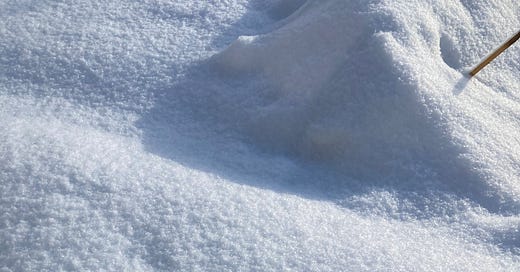In the bleak mid-winter
Frosty wind made moan;
Earth stood hard as iron,
Water like a stone. . . .
Christina Rossetti never made it to the Coast of Maine but her words ring like prophecy now at the tail end of January, a tough time to be here. It’s true the days are getting ever so slightly longer but there’s a lot of winter still to come. The ground is iro…
Keep reading with a 7-day free trial
Subscribe to On the Kitchen Porch to keep reading this post and get 7 days of free access to the full post archives.




